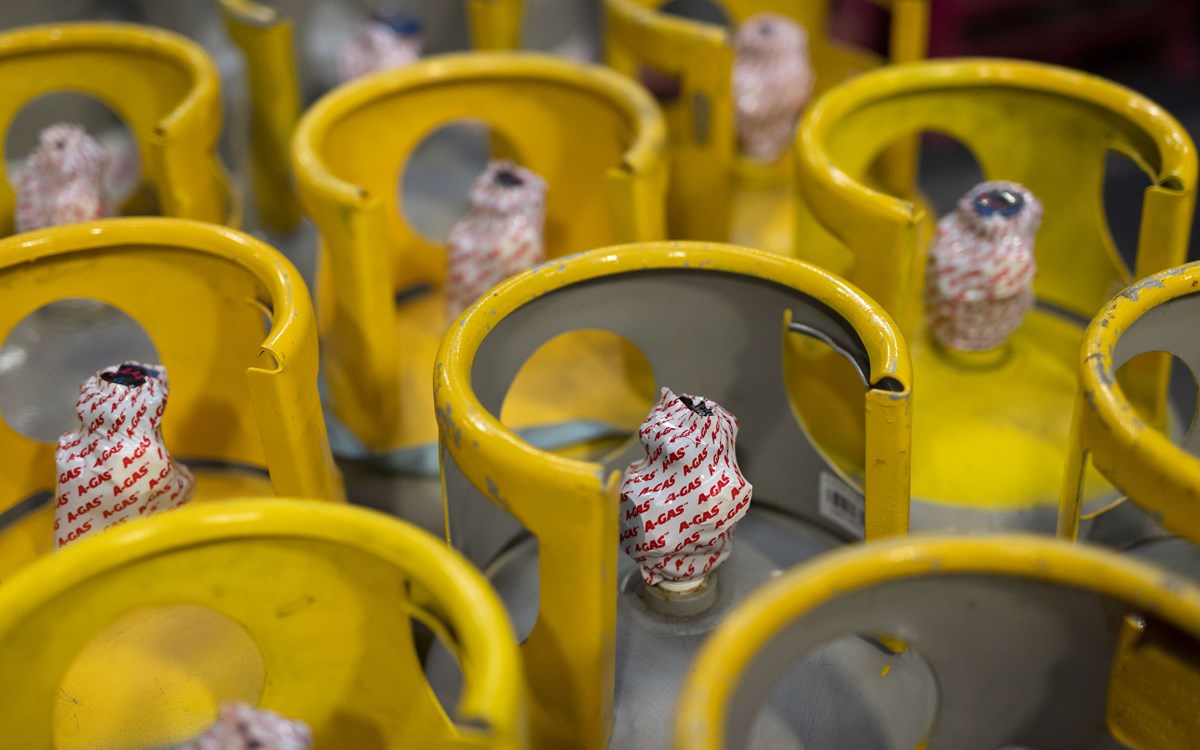Reclaimed Gases: The Way Forward
A‑Gas Commercial Strategy Director, Dr Patrick Amrhein, on how the refrigeration industry should react to the new challenges laid down by the F‑Gas Regulations.

The months ahead will be ones of consolidation in the refrigeration industry, but having said that, change will take place this year as suppliers of virgin R404A run down their stocks of this legacy gas.
If contractors are looking to use this refrigerant rather than a low GWP alternative, it is now likely that they will be supplied with reclaimed R404A. In this respect, installers can be safe in the knowledge that reclaimed R404A will not lead them to breach the F‑Gas Regulations as this reclaimed gas has the nod of approval from the regulators. You can be sure that reclaim will be a part of the refrigeration mix – along with the new generation of gases – for many years to come.
A‑Gas has been working hard to extend its range of reclaimed gases to customers. It has invested heavily in expanding reclamation facilities in the UK and abroad and has built two new tanks at its site in Portbury, near Bristol, to increase its storage capacity.
In Continental Europe, A‑Gas acquired the German refrigerant supplier Arthur Friedrichs Kältemittel (AFK) and plans to use its site in Hamburg for a new refrigerant reclamation facility. A‑Gas also has a base in Holland after it acquired refrigerant specialists, BTC.
In tandem with this growth is the success of the A-Gas Recovery service, which is making its mark in the UK and in Europe after it was launched at Chillventa last year. This is a quick and easy way to recover refrigerant on site and A-Gas Rapid Recovery can tackle jobs of all sizes at short notice.
The immediate years to follow 2019 will be ones of great change. Next year, there will be a ban on the placing on the market of stationary refrigeration equipment using high GWP refrigerants (>2500 GWP), with an exception for equipment operating below -50°C.
The ban on the use of virgin refrigerants with a GWP of more than 2500 will give the industry plenty to think about. Irrespective of the size of the system, this means you will be unable to install refrigeration equipment that uses gases above this threshold. This effectively brings the installation of new R404A equipment to an end.
There will also be a ban on servicing existing equipment with virgin refrigerants that have a GWP of more than 2500 and where the charge is greater than 40 tonnes of CO2 equivalent – that is equal in amount to approximately 10kgs of R404A.
Users of equipment still running on R404A could be forgiven for feeling confused with all these thresholds that mean you can service smaller equipment with virgin R404A but not larger equipment.
If the system contains a charge of gas that is more than 10kg of R404A, the ban on servicing that equipment with virgin product will mean that an alternative low GWP refrigerant is needed. The good news is that this is not the only option as reclaimed R404A can be used up until 2030, regardless of the charge size.
I believe that refrigerant suppliers will simply remove all stocks of virgin R404A from sale and switch to reclaimed R404A. In truth, this will make it easier for the contractors who will at least know that they can use all they are buying without falling foul of the regulations.
We have passed through two years where there has been a great deal of uncertainty about refrigerant availability and if there will be sufficient amounts of the new generation gases to support the phase down. What 2018 has taught us is that it is going to be a mixture of new – and reclaimed refrigerants – that will support the transition away from high GWP gases.
There is less pressure on supplies and what has emerged is that the market has now stabilised and we can plan for the future with some degree of confidence. One thing you can be certain of is that this year the major refrigerant suppliers will say goodbye to virgin R404A.
It is significant that the big supermarkets and many businesses in the food processing industry have adapted well to change. The last two years have seen this sector make considerable progress in converting to lower GWP gases. A-Gas Rapid Recovery can help ensure a smooth transition if you are making the switch.
The majority of the major supermarkets are well advanced in reducing their reliance on R404A. Most seem to be moving to interim replacements like R448A and R449A which will give them some breathing space to the mid to late 2020s.
If you move forward into 2021 and 2022, greater change is on the way. In 2021 there is the next step down in the F‑Gas quota when virgin refrigerant availability will drop by another 18 per cent (in absolute terms) – on a CO2 equivalent basis – taking the industry down to 45 per cent of the 2015 baseline level.
This is a significant drop and some market volatility is to be expected. In 2022, the bar for the use of virgin HFCs is raised even higher when the threshold drops from 2500 to 150 GWP for hermetically sealed equipment and multipack centralised refrigeration equipment above 40kW.
With major changes on the way in the years following 2019, it is clearly not a time to ignore what is to come. If you do need help, do not be afraid to ask the experts and your refrigerant suppliers are the best place to start.
A-Gas can help you change to a low GWP refrigerant, switch to a reclaimed gas and give you options to assist in overcoming problems along the way. Our team is also happy to provide advice on the telephone. Help is on hand and I would urge you to make the most of it.
